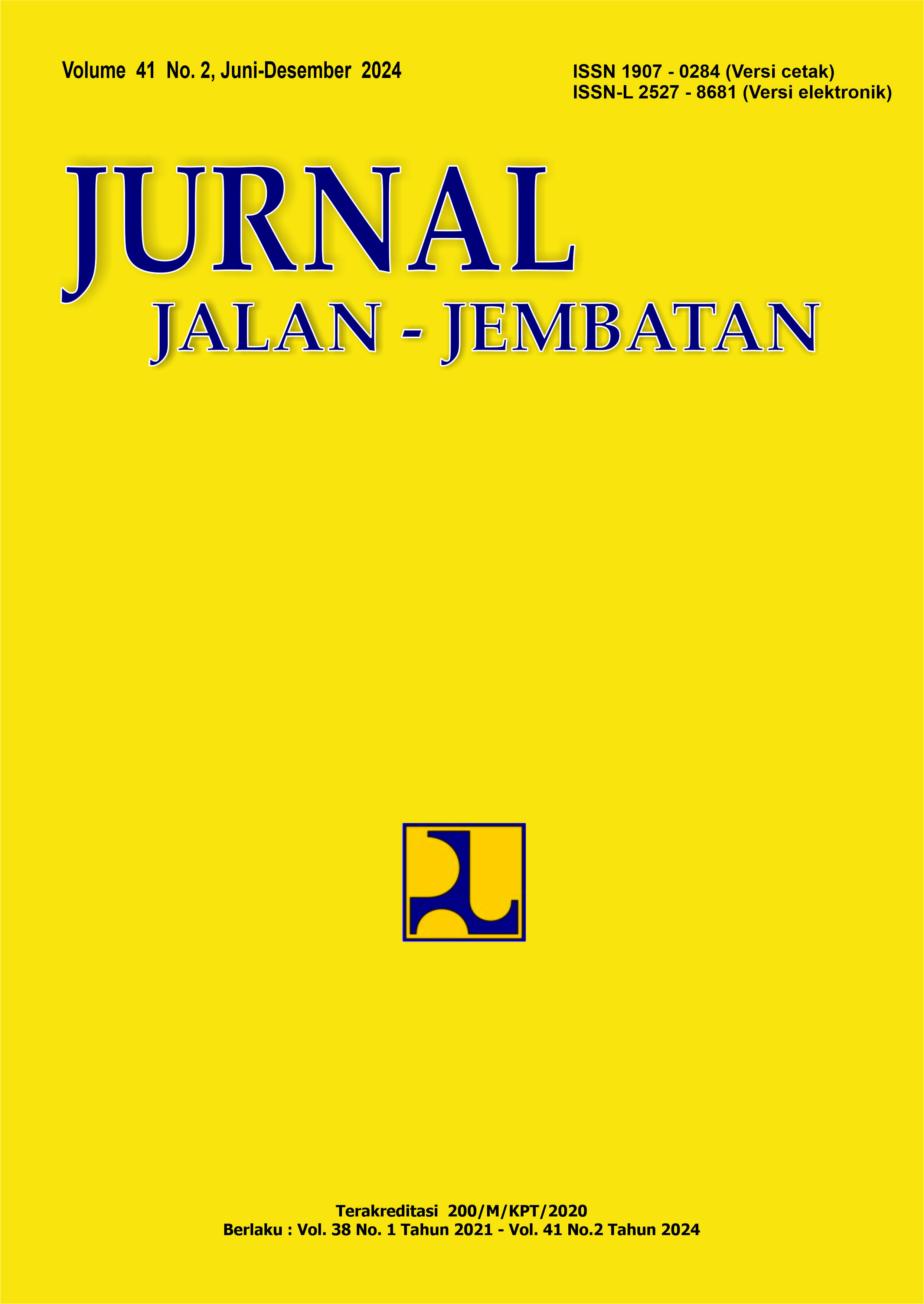MARSHALL PARAMETERS AND PERMEABILITY COEFFICIENT OF FLY ASH AND HUSK ASH MIXTURE IN GEOPOROUS ASPHALT
Main Article Content
Abstract
The use of geoporous asphalt is an environmentally friendly alternative because it is made using waste and in its application it can help water absorption into the soil.. The waste used to manufacture porous asphalt in this study was fly ash (FA) and rice husk ash (AS). Fly ash has pozzolanic properties, and rice husk ash contains carbon (C) and silica elements, which function as adhesives. Using goepore asphalt on the shoulder of the road can be an alternative to faster water absorption without damaging the pavement layer underneath. This study aimed to obtain a mixture variation between FA and AS as fillers for optimal mixture variation in manufacturing porous asphalt. Comparison of filler mixtures in manufacturing test objects with FA and AS mixtures variations using the filler substitution method in the manufacture of regular asphalt, namely cement. In the variation of normal asphalt mixture content, the cement used is 2% from the weight of asphalt substituted with a mixture of FA and AS for the manufacture of geoporous asphalt test specimens with variations in filler mixture con. This study used 60/70 penetration asphalt with an optimum asphalt content (KAO) of 4.6%. From the test results, it was found that the most optimum mixture content variation was in a mixture of 100% AS: 0% FA with a stability value of 729.556 kg, a flow value of 5.37 mm, a VIM (Void In the Mix) value of 20.86%, a Marshall Quotient (MQ) of 135.82 kg/mm, and a permeability coefficient value of 0.447 cm/sec. The Marshall parameter values and permeability coefficient values meet the AAPA 2004 specifications, namely 500 kg stability, 2-6 mm flow value, 18-25% VIM value, 400 kg/mm MQ, and a permeability coefficient of 0.1-0.5 cm/sec.
Article Details

This work is licensed under a Creative Commons Attribution-NonCommercial-ShareAlike 4.0 International License.
Authors who publish in this journal agree to the following terms:
-
Authors retain copyright and grant the journal the right of first publication with the work simultaneously licensed under a Creative Commons Attribution License, which allows others to share the work with acknowledgment of the work's authorship and initial publication in this journal.
-
Authors may enter into additional contractual arrangements for the non-exclusive distribution of the journal's published version of the work (e.g., post it to an institutional repository or publish it in a book), with acknowledgment of its initial publication in this journal.
-
Authors are permitted and encouraged to post their work online (e.g., in institutional repositories or on their website) as it can lead to productive exchanges, as well as earlier and greater citation of the published work.
Each submitted manuscript must be accompanied by a "Manuscript Originality Statement" and a "Copyright Transfer Statement".

